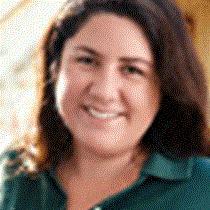Isabela and Fernandina Islands
I woke up with the ocean still as a mirror and the view of the greatest volcanoes in the world (in my opinion): Isabela and Fernandina. With a mellow feeling I made my way down the steps to grab a cup of coffee and to my surprise, I find three unfamiliar faces walking through the corridors. One is a young guy, curly hair, tall and golden; there are also two girls, one blonde, tanned skin, the other one black hair and broad smile. Who are they? Have we been boarded by modern pirates? We are in the middle of nowhere, sailing the Bolivar channel, and three new faces just show up. Then I learn they are volunteers for the Charles Darwin Research Station. They came on board yesterday, from Puerto Ayora, and we are giving them a ride to Fernandina, where they will be picked up by National Park rangers to be taken to their different research sites. They have been counting, tagging and measuring cormorants and penguins for several months, part of a project that started in 2001 to study the effects of climatic changes in these species populations. Robert, the tall curly-haired youth, was born in the Galápagos and dreams about, after getting his degree in Liberal Arts, coming back to the islands to be part of their destiny. Carolina was born here as well: as an Angermeyer she is the third generation on the islands. She studied biology and is now doing her thesis on cormorants. Susana, from Quito, fell in love with the islands as a teenager and now her dream came true. She is visiting the unseen parts of the Galápagos, and most important of all, she is helping in research. The Islander is a happy ship, happy to serve the scientific community.
Our guests enjoyed the company of the young visitors as well, who told us all about their projects, and all about cormorants and penguins. It was also great to see how these three people, some of whom grew up in the islands, enjoyed every one of today’s sightings as if had been their first day in the Galápagos. They were on the outside decks together with the whole ship (guests and crew) witnessing the common dolphin acrobatics. We all snorkeled among marine turtles and took incredible pictures of the magnificent landscape in this clear perfect day in the western realm of the Galápagos. And of course, we did see several flightless cormorants and Galápagos penguins, both species unique to only this archipelago in the whole world.
I woke up with the ocean still as a mirror and the view of the greatest volcanoes in the world (in my opinion): Isabela and Fernandina. With a mellow feeling I made my way down the steps to grab a cup of coffee and to my surprise, I find three unfamiliar faces walking through the corridors. One is a young guy, curly hair, tall and golden; there are also two girls, one blonde, tanned skin, the other one black hair and broad smile. Who are they? Have we been boarded by modern pirates? We are in the middle of nowhere, sailing the Bolivar channel, and three new faces just show up. Then I learn they are volunteers for the Charles Darwin Research Station. They came on board yesterday, from Puerto Ayora, and we are giving them a ride to Fernandina, where they will be picked up by National Park rangers to be taken to their different research sites. They have been counting, tagging and measuring cormorants and penguins for several months, part of a project that started in 2001 to study the effects of climatic changes in these species populations. Robert, the tall curly-haired youth, was born in the Galápagos and dreams about, after getting his degree in Liberal Arts, coming back to the islands to be part of their destiny. Carolina was born here as well: as an Angermeyer she is the third generation on the islands. She studied biology and is now doing her thesis on cormorants. Susana, from Quito, fell in love with the islands as a teenager and now her dream came true. She is visiting the unseen parts of the Galápagos, and most important of all, she is helping in research. The Islander is a happy ship, happy to serve the scientific community.
Our guests enjoyed the company of the young visitors as well, who told us all about their projects, and all about cormorants and penguins. It was also great to see how these three people, some of whom grew up in the islands, enjoyed every one of today’s sightings as if had been their first day in the Galápagos. They were on the outside decks together with the whole ship (guests and crew) witnessing the common dolphin acrobatics. We all snorkeled among marine turtles and took incredible pictures of the magnificent landscape in this clear perfect day in the western realm of the Galápagos. And of course, we did see several flightless cormorants and Galápagos penguins, both species unique to only this archipelago in the whole world.




